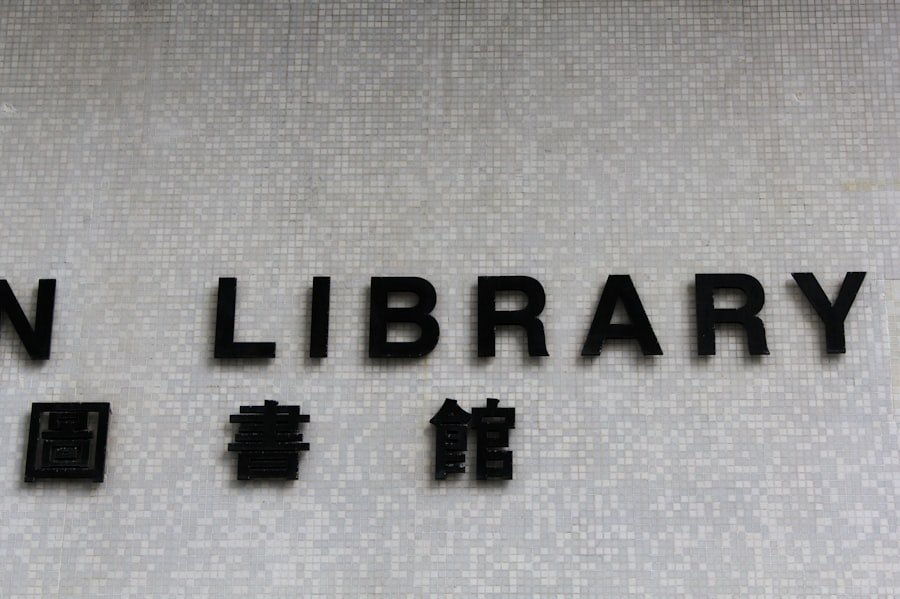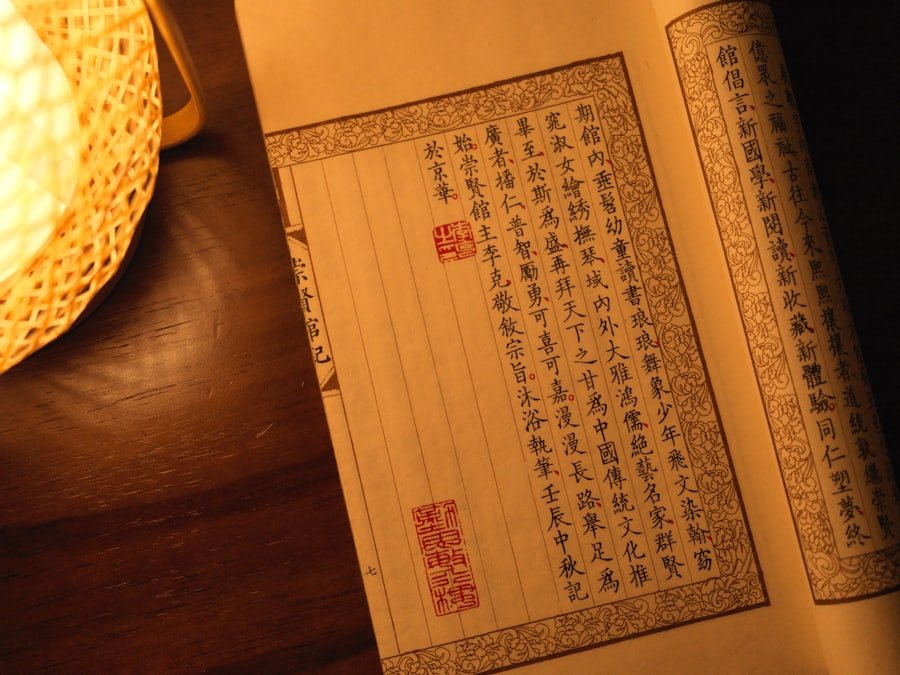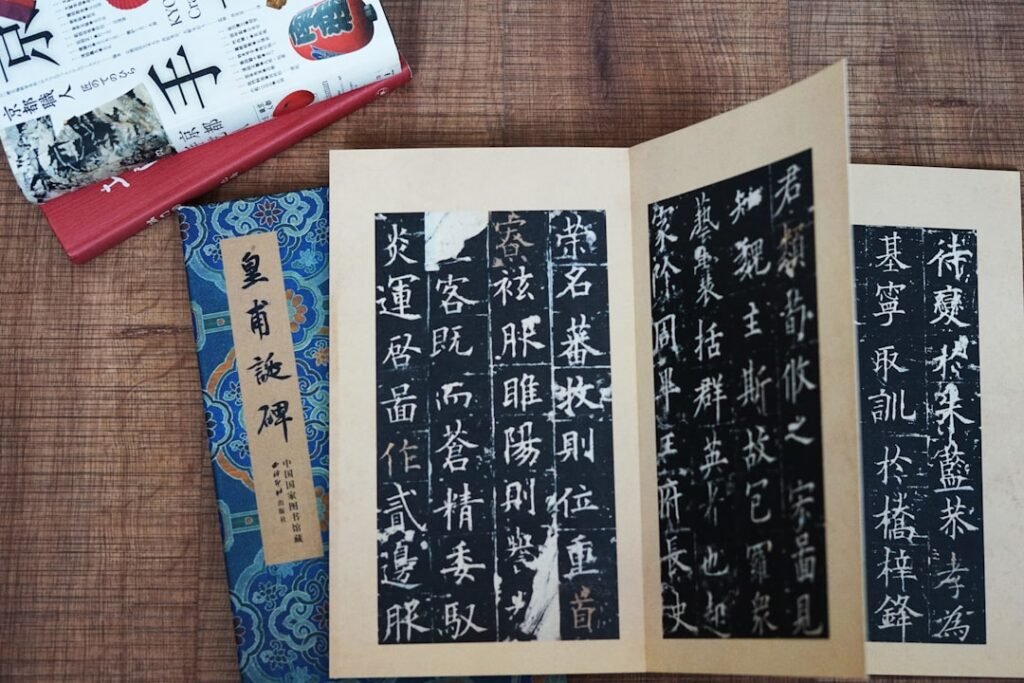Engaging in Chinese calligraphy is a remarkable way to develop fine motor skills, which are essential for various daily activities. The intricate movements required to wield a brush effectively demand a level of dexterity that many may not possess initially. As students learn to control the brush, they engage in a series of precise motions that enhance their hand strength and coordination.
This practice not only benefits those interested in calligraphy but also translates into improved skills in other areas, such as writing, drawing, and even playing musical instruments. Moreover, the repetitive nature of calligraphy allows for continuous refinement of these motor skills. Each stroke requires careful attention and control, encouraging practitioners to focus on the subtleties of their movements.
Over time, this leads to greater muscle memory and an increased ability to perform tasks that require fine motor precision. As students progress through their calligraphy journey, they often find that their overall dexterity improves, making everyday tasks feel more manageable and enjoyable. Master the art of Chinese calligraphy. Enroll now at the LC Chinese School in Oslo.
Table of Contents
ToggleSummary
- Enhanced fine motor skills through the practice of traditional Chinese brush painting
- Increased patience and focus as a result of the meticulous and detailed nature of the art form
- Improved understanding of Chinese culture through the study of traditional Chinese art techniques and themes
- Heightened creativity and innovation by exploring new artistic methods and styles
- Refined hand-eye coordination through the precise and controlled brushwork of Chinese brush painting
Increased Patience and Focus
The art of Chinese calligraphy is not merely about producing beautiful characters; it is also a profound exercise in patience and concentration. Each stroke must be executed with care and intention, which can be a challenging endeavour for many. As students immerse themselves in this practice, they learn to slow down and appreciate the process rather than rushing to complete a piece.
This shift in mindset fosters a sense of patience that can be beneficial in various aspects of life. Furthermore, the meditative quality of calligraphy encourages individuals to cultivate focus. In a world filled with distractions, the act of concentrating on each brushstroke can be a refreshing reprieve.
Students often find themselves absorbed in the rhythm of their movements, allowing them to escape the chaos of daily life. This heightened focus not only enhances their calligraphy skills but also translates into improved concentration in other areas, such as academics or professional pursuits.
Improved Understanding of Chinese Culture

Chinese calligraphy is deeply intertwined with the rich tapestry of Chinese culture and history. By engaging in this art form, students gain insights into the philosophies, traditions, and values that have shaped Chinese society over millennia. Each character carries its own meaning and significance, often reflecting cultural concepts that may be unfamiliar to those outside the culture.
As students learn about these characters, they develop a deeper appreciation for the nuances of the language and its cultural context. Moreover, calligraphy serves as a gateway to exploring other aspects of Chinese culture, such as poetry, philosophy, and visual arts. Many calligraphers draw inspiration from classical texts and literary works, allowing students to connect with the broader cultural heritage.
This exploration fosters a sense of respect and understanding for a culture that may differ significantly from their own, promoting cross-cultural dialogue and appreciation.
Heightened Creativity and Innovation
Chinese calligraphy is not just a technical skill; it is also an expressive art form that encourages creativity and innovation. As students experiment with different styles and techniques, they are given the freedom to explore their artistic inclinations. The fluidity of brushwork allows for personal interpretation, enabling individuals to develop their unique voice within the art form.
This creative exploration can lead to unexpected discoveries and innovations in their approach to calligraphy. Additionally, the process of creating calligraphy can inspire creativity beyond the confines of the art itself. The meditative nature of the practice often leads to moments of clarity and inspiration, allowing students to think outside the box in other areas of their lives.
Whether it be in problem-solving or artistic endeavours, the skills cultivated through calligraphy can enhance one’s ability to innovate and approach challenges with a fresh perspective.
Refined Hand-Eye Coordination
The intricate nature of Chinese calligraphy necessitates a high level of hand-eye coordination. As students learn to synchronise their movements with their visual perception, they develop a keen sense of spatial awareness. This skill is crucial not only for calligraphy but also for various activities that require precise coordination, such as sports or playing musical instruments.
The practice of controlling the brush while simultaneously observing the paper fosters an acute awareness of one’s movements in relation to their environment. Over time, this refined hand-eye coordination can lead to improved performance in other areas of life. Students often find that tasks requiring similar coordination become easier and more intuitive as they continue to practice calligraphy.
The benefits extend beyond artistic pursuits; individuals may notice enhancements in their everyday activities, from typing on a keyboard to engaging in physical sports.
Expanded Knowledge of Traditional Chinese Art

Chinese calligraphy is one of the oldest forms of artistic expression in China, and studying it provides students with a comprehensive understanding of traditional Chinese art forms. Calligraphy is often regarded as the highest form of visual art in Chinese culture, alongside painting and poetry. By delving into this discipline, students gain insights into the historical significance and evolution of these art forms throughout Chinese history.
Moreover, learning about traditional Chinese art encompasses an exploration of various styles and techniques that have emerged over centuries. Students are introduced to different schools of thought within calligraphy, each with its unique characteristics and philosophies. This exposure not only enriches their understanding of calligraphy but also fosters an appreciation for the broader spectrum of traditional Chinese artistic expression.
Strengthened Mindfulness and Presence
The practice of Chinese calligraphy inherently promotes mindfulness and presence. As students engage with each stroke, they are encouraged to focus entirely on the task at hand, cultivating a sense of awareness that transcends the act itself. This mindfulness practice can have profound effects on mental well-being, allowing individuals to find solace in the rhythm of their brushwork.
Incorporating mindfulness into daily life can lead to reduced stress levels and increased emotional resilience. Students often report feeling more grounded and centred after engaging in calligraphy sessions, as the meditative quality of the practice allows them to disconnect from external pressures. This strengthened sense of presence can enhance overall quality of life, fostering a deeper connection with oneself and one’s surroundings.
Enhanced Problem-Solving Abilities
The challenges presented by Chinese calligraphy can significantly enhance problem-solving abilities. As students navigate the complexities of brush control and character formation, they are often faced with obstacles that require creative solutions. Whether it’s adjusting their grip on the brush or finding ways to express a particular character style, these challenges encourage critical thinking and adaptability.
Moreover, the process of trial and error inherent in mastering calligraphy fosters resilience. Students learn that mistakes are part of the journey and that each misstep presents an opportunity for growth. This mindset can be applied beyond calligraphy; individuals often find themselves approaching problems in other areas with greater confidence and creativity.
Improved Brush Control and Precision
One of the most significant benefits of studying Chinese calligraphy is the improvement in brush control and precision. Mastering this art form requires meticulous attention to detail and an understanding of how pressure affects stroke quality. As students practice various techniques, they develop a heightened sense of control over their brush movements, leading to more refined and expressive characters.
This enhanced brush control translates into greater precision not only in calligraphy but also in other artistic pursuits such as painting or drawing. Students often find that their ability to manipulate tools improves significantly as they become more attuned to their movements. The skills acquired through calligraphy practice can lead to a more confident approach to any creative endeavour requiring fine motor skills.
Heightened Sensory Awareness
Chinese calligraphy engages multiple senses simultaneously, fostering heightened sensory awareness among practitioners. The tactile experience of handling brushes and ink, combined with the visual stimulation of observing characters take shape on paper, creates a rich sensory environment. This multi-sensory engagement encourages individuals to become more attuned to their surroundings and enhances their overall awareness.
As students immerse themselves in this sensory experience, they often find themselves more present in other aspects of life as well. The ability to appreciate subtle details—whether it be in nature or everyday interactions—can lead to a deeper connection with one’s environment. This heightened sensory awareness enriches life experiences and fosters a greater appreciation for beauty in all its forms.
Increased Appreciation for Artistic Expression
Finally, studying Chinese calligraphy cultivates an increased appreciation for artistic expression as a whole. Through the lens of this ancient art form, students come to understand the significance of creativity in human experience. They learn that art is not merely about aesthetics; it is a powerful means of communication that transcends language barriers.
As students explore different styles and techniques within calligraphy, they develop an understanding of how personal expression can manifest through various mediums. This newfound appreciation extends beyond calligraphy itself; individuals often find themselves drawn to other forms of artistic expression—be it music, dance, or visual arts—recognising the universal language that creativity embodies. In conclusion, engaging in Chinese calligraphy offers a multitude of benefits that extend far beyond mere artistic skill.
From enhanced fine motor skills to increased appreciation for artistic expression, each aspect contributes to personal growth and development. For those interested in exploring this enriching art form further, the LC Chinese School in Oslo offers exceptional courses tailored for all levels. With experienced instructors guiding students through the intricacies of Chinese calligraphy, participants can embark on a transformative journey that deepens their understanding of both the art itself and the rich cultural heritage it represents.
Whether you are a complete novice or looking to refine your skills, these courses provide an invaluable opportunity to immerse yourself in this beautiful tradition while reaping all its associated benefits.
Master the art of Chinese calligraphy. Enroll now at the LC Chinese School in Oslo.







